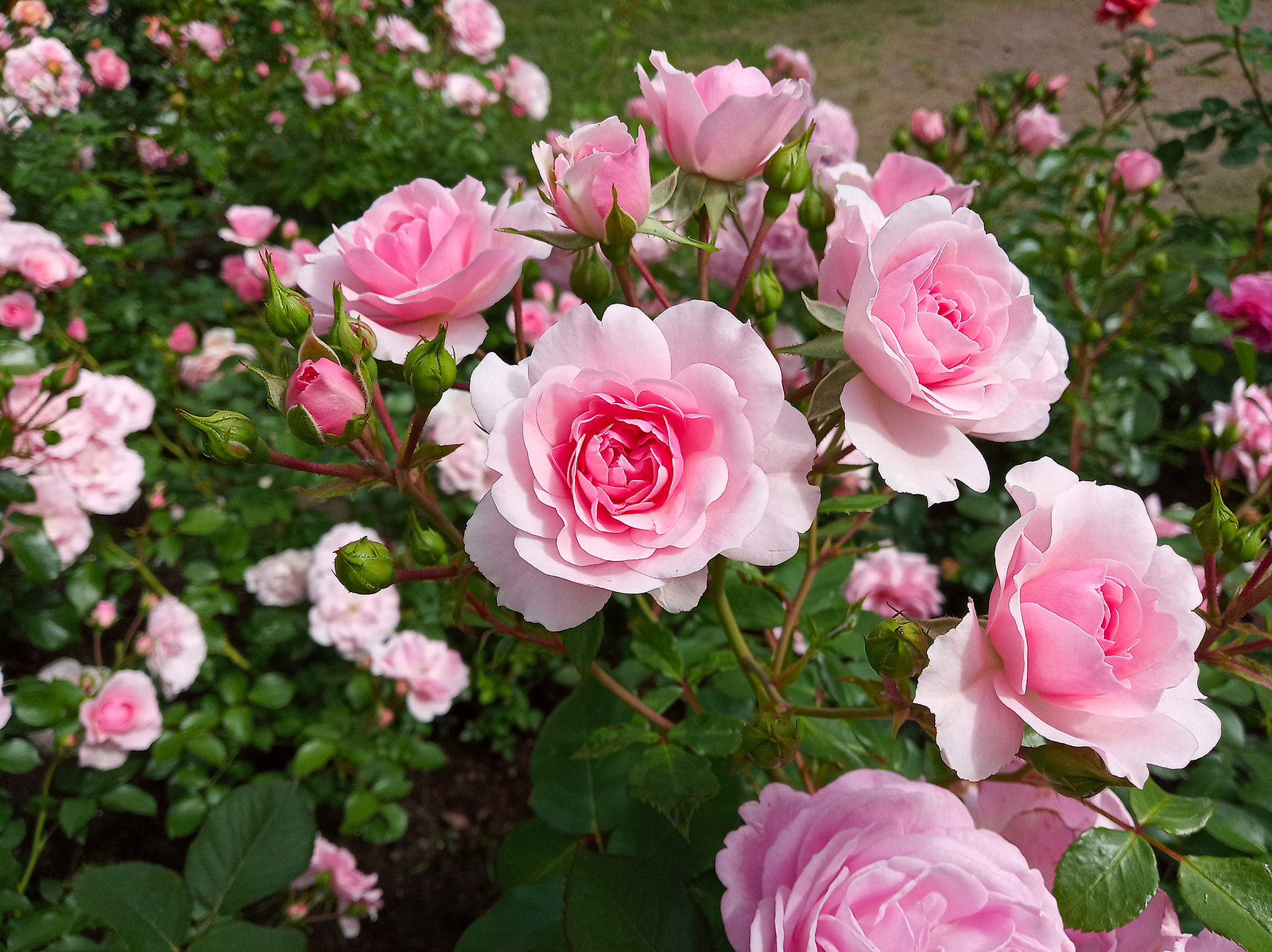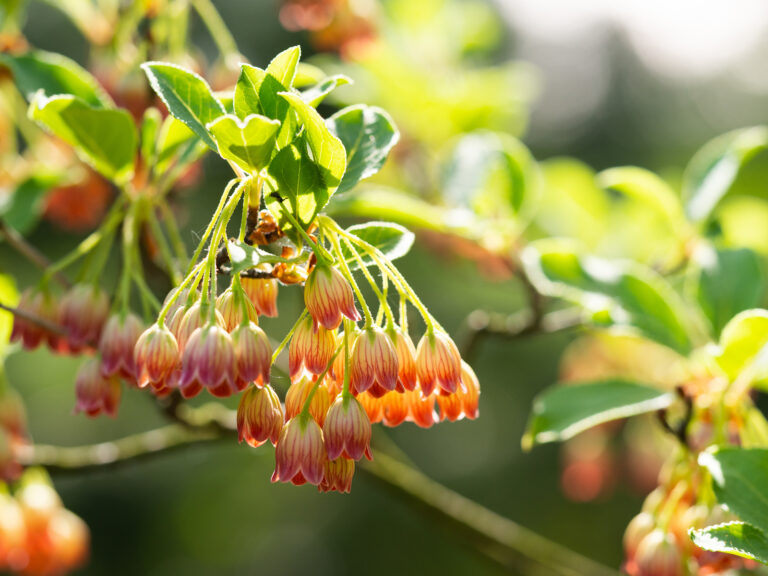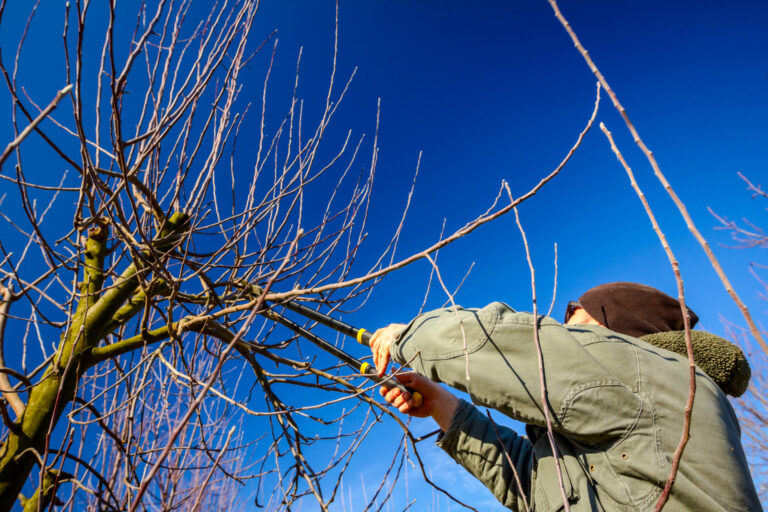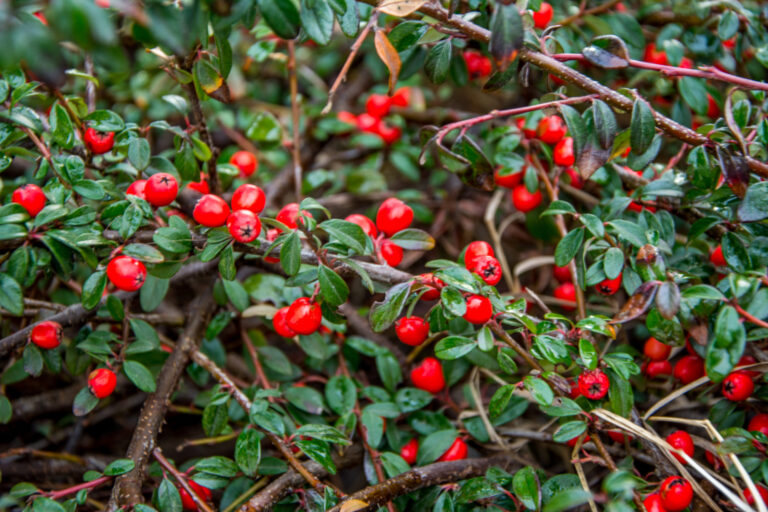How to Plant and Care for Rosa – Rose
Roses (Rosa spp.) are among the most beloved and versatile flowering shrubs in the garden. With their rich history, wide range of colors, enchanting fragrance, and symbolic meaning, they have captivated gardeners for centuries. Roses come in various forms, including climbing, shrub, hybrid tea, floribunda, and miniature roses, each with its unique characteristics. Their blooms, ranging from single to double-petaled varieties, can be found in nearly every color imaginable, including red, pink, white, yellow, orange, and even shades of blue and purple.
Roses are often associated with romance and elegance, but they can be used in a variety of garden styles, from formal rose beds to informal cottage gardens. Their ability to attract pollinators, such as bees and butterflies, adds ecological value to the garden, while their adaptability makes them suitable for different climates and garden settings.
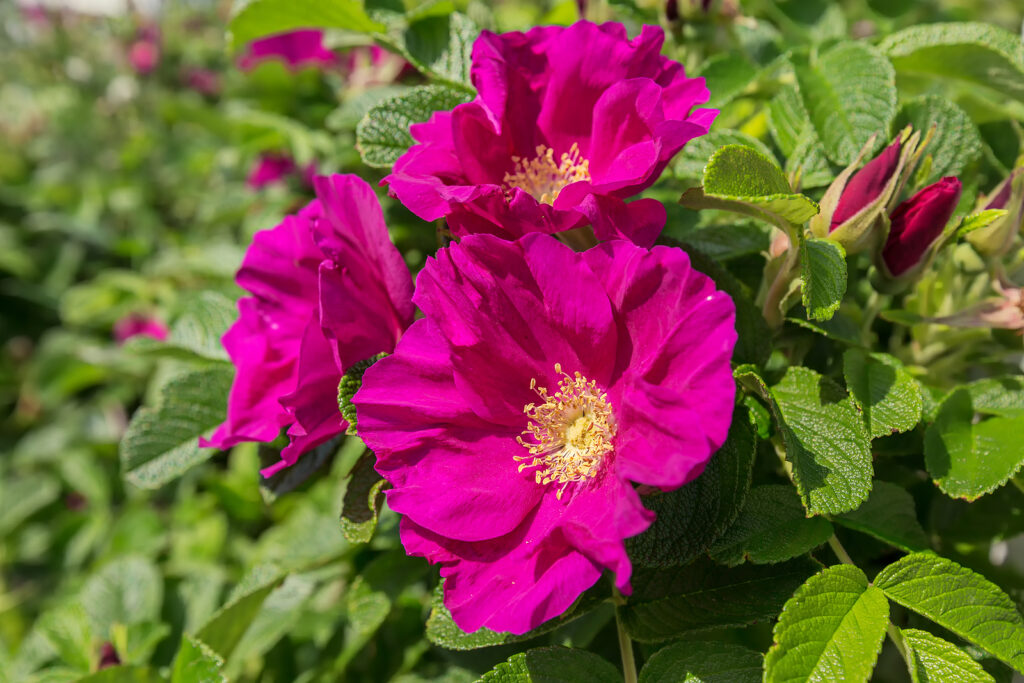
Choosing the Right Rose Variety
Selecting the right variety is crucial, as roses come in many forms and sizes. Consider the following types:
- Hybrid Tea Roses: Known for their large, classic-shaped blooms and long stems, making them ideal for cutting.
- Floribunda Roses: These have clusters of flowers and bloom continuously throughout the season, offering a colorful display.
- Climbing Roses: Perfect for growing along walls, trellises, or pergolas, they can reach heights of 10-15 feet or more.
- Shrub Roses: These are hardy and versatile, often used for hedging or mass planting. Examples include Rosa rugosa and Rosa gallica.
- Miniature Roses: These compact varieties are suitable for container gardening or small borders.
When choosing a variety, consider the mature size, flower color, fragrance, and growth habit, as well as your climate and garden conditions.
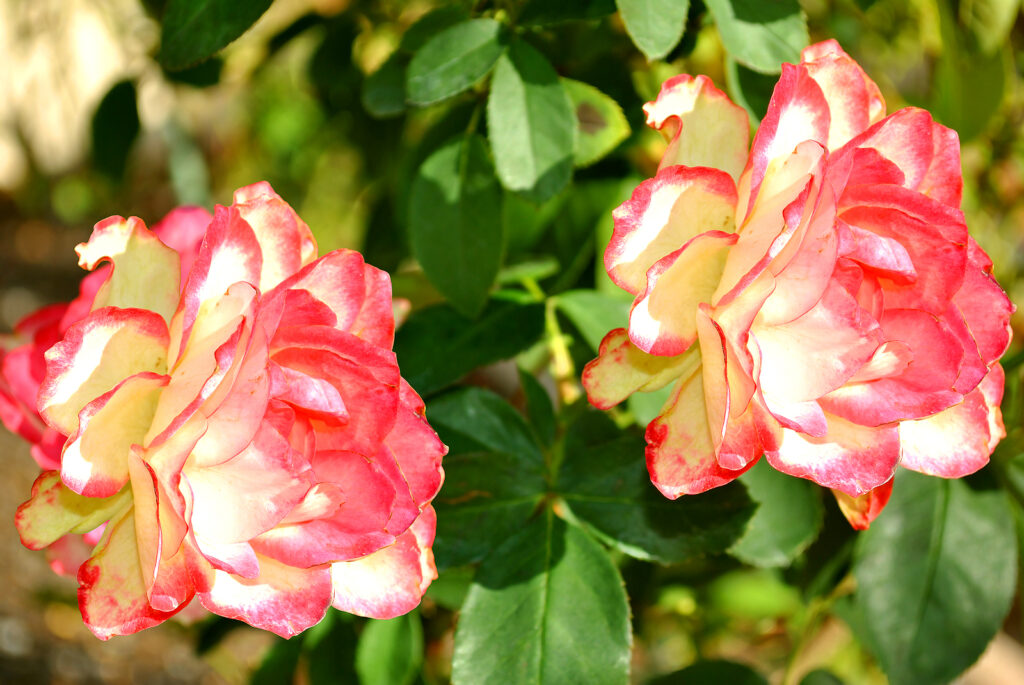
Ideal Growing Conditions for Roses
Roses thrive when provided with the following conditions:
- Sunlight: Roses need at least 6-8 hours of direct sunlight daily for optimal blooming. In hotter climates, some afternoon shade can help protect the flowers and foliage from scorching.
- Soil: Well-drained soil enriched with organic matter, such as compost or well-rotted manure, is ideal. Roses prefer a slightly acidic to neutral pH (6.0-7.0).
- Climate: Roses are adaptable to various climates but may require special care in extreme conditions. In cold climates, choose hardy varieties or provide winter protection. In hot climates, provide extra water and mulch to keep the soil cool.
Planting Roses
- Timing: The best time to plant roses is in early spring or fall when the weather is cool, allowing the roots to establish before extreme temperatures.
- Planting Technique:
- Dig a hole twice as wide and as deep as the root ball or bare root.
- Amend the soil with compost or well-rotted manure.
- For bare-root roses, soak the roots in water for a few hours before planting.
- Place the plant in the hole, ensuring the graft union (a swollen area near the base) is just above ground level in warm climates, or 1-2 inches below in colder regions.
- Backfill the hole with soil and water thoroughly to settle the soil around the roots.
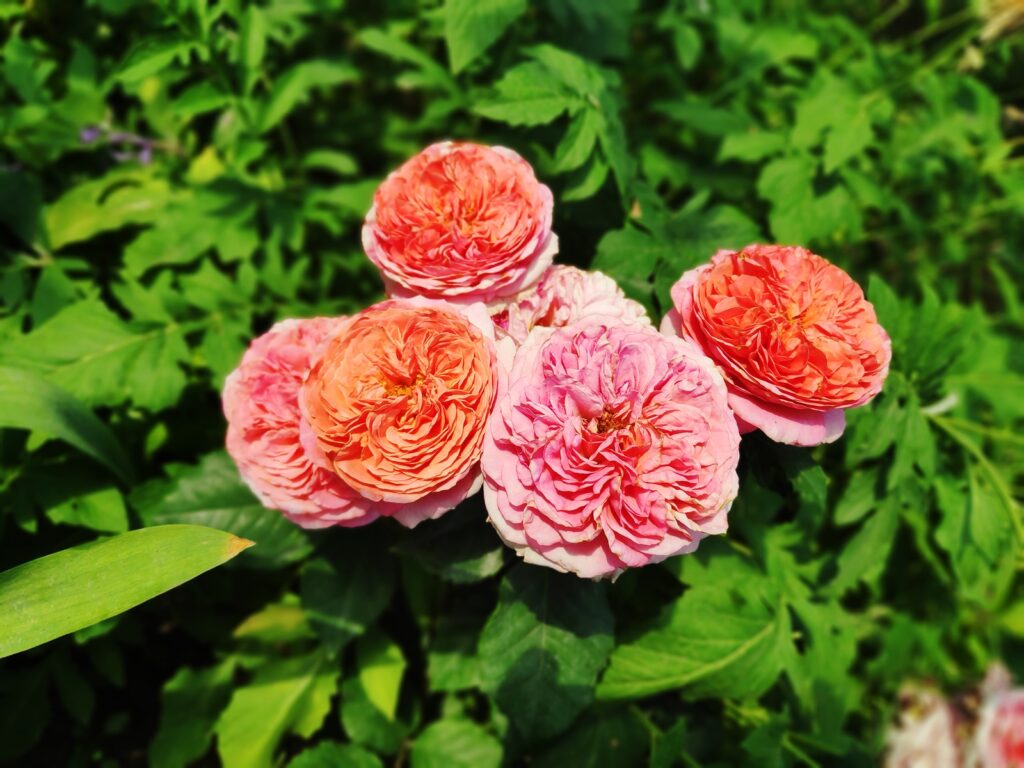
Caring for Roses
- Watering: Roses need deep watering, especially during dry periods. Water at the base of the plant to keep the foliage dry and reduce the risk of fungal diseases. Aim for about 1-2 inches of water per week, adjusting as needed.
- Fertilizing: Roses are heavy feeders and benefit from regular feeding. Use a balanced, slow-release fertilizer in early spring when new growth begins, and repeat every 4-6 weeks during the growing season. Organic options, such as compost or fish emulsion, also work well.
- Mulching: Apply a 2-3 inch layer of organic mulch around the base of the rose to conserve moisture, suppress weeds, and regulate soil temperature.
- Pruning: Prune roses in late winter or early spring, removing dead, damaged, or crossing branches to encourage healthy growth and improve air circulation. Different types of roses have different pruning requirements:
- For Hybrid Teas and Floribundas, prune back to about 12-18 inches, cutting just above an outward-facing bud.
- For Climbing Roses, remove deadwood and thin out old canes after flowering, allowing new growth to develop.
- Shrub Roses require minimal pruning, usually just light shaping.
Propagating Roses
Roses can be propagated through various methods:
- Cuttings: Take a 6-8 inch cutting from healthy, semi-ripe wood in late summer, dip it in rooting hormone, and plant it in a pot of moist soil. Keep the cutting in a sheltered spot until roots develop.
- Layering: Bury a low-growing cane partially in the soil while still attached to the parent plant. After roots form, sever the new plant and transplant it.
- Grafting or Budding: This advanced method involves joining a rose cutting to a different rootstock, commonly used by commercial growers.

Using Roses in the Garden
Rose Beds and Borders
Roses make stunning focal points in dedicated rose beds or mixed borders. For a traditional look, create a rose bed with a selection of hybrid tea or floribunda roses in complementary colors. Use taller varieties at the back and shorter varieties at the front to create layers. In mixed borders, roses can be paired with perennials such as lavender, catmint, or salvia, which complement the rose blooms and help deter pests.
Cottage Gardens
Roses are a natural fit for cottage gardens, where their informal, sprawling habit blends beautifully with other old-fashioned plants like foxgloves, delphiniums, and peonies. Choose fragrant, old-fashioned varieties such as Rosa alba or Rosa damascena for a traditional look. Allow some varieties to grow naturally with minimal pruning to create a relaxed, romantic atmosphere.
Climbing and Rambling Roses
Climbing and rambling roses add vertical interest to the garden. Train them over trellises, arches, or pergolas for a stunning display of blooms. These roses can also be used to cover walls, fences, or unsightly structures. Secure the canes to supports as they grow, and prune them after flowering to encourage new blooms. Popular varieties include Rosa ‘New Dawn’ and Rosa ‘Eden Climber’.
Container Planting
Growing roses in containers allows you to enjoy their beauty in smaller spaces, such as patios or balconies. Choose compact varieties like miniature or patio roses. Use a large pot with drainage holes, and fill it with a well-draining potting mix. Water regularly and feed with a rose-specific fertilizer. Container roses may need extra winter protection in cold climates.
Hedges and Ground Cover
Shrub roses can be used to create informal hedges or low-maintenance ground cover. Hardy varieties such as Rosa rugosa or Rosa ‘Flower Carpet’ are ideal for mass planting, providing a long season of blooms. These roses are also resistant to diseases and require minimal pruning. Plant them about 3 feet apart for a dense hedge or ground cover effect.
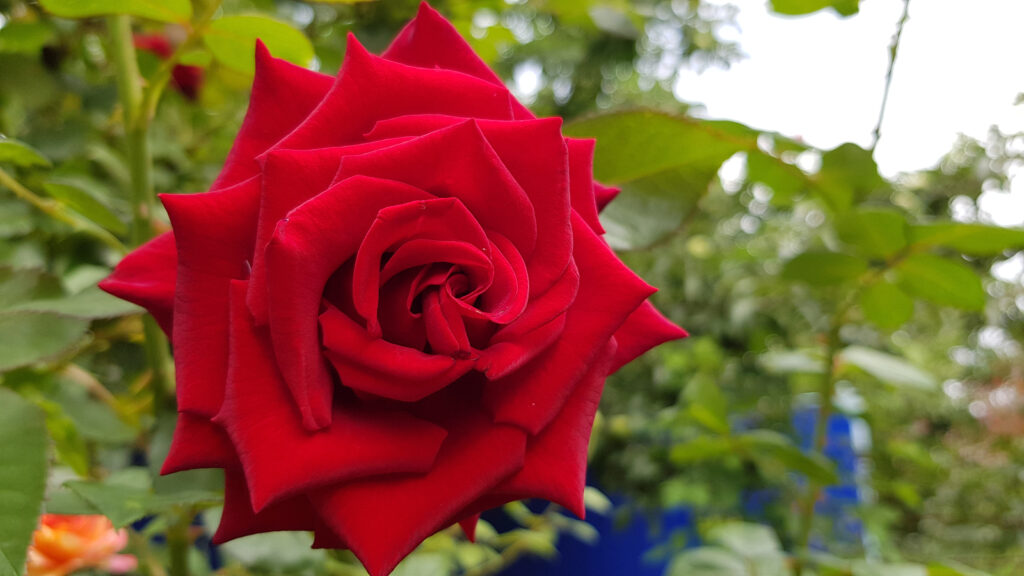
Benefits of Roses
Attracting Pollinators
Roses are valuable for wildlife, attracting bees, butterflies, and other pollinators. Single-petaled and semi-double varieties are particularly beneficial, as they provide easier access to nectar. Planting roses in the garden contributes to a healthier ecosystem by supporting pollinator populations.
Fragrance and Aesthetic Appeal
Roses are prized for their fragrance, which can range from light and fruity to rich and spicy. Fragrant roses add a sensory dimension to the garden and can be planted near walkways or seating areas to enjoy their scent up close. Their aesthetic appeal makes them a timeless addition to any garden style.
Cut Flowers and Floral Arrangements
Roses are popular for cutting and using in floral arrangements. Hybrid tea roses, with their long stems and classic bloom shape, are ideal for bouquets, while floribundas add color and texture. Growing your own roses allows you to create stunning flower arrangements for your home or special occasions.
Medicinal and Culinary Uses
Some rose varieties, particularly old-fashioned species, have medicinal and culinary uses. Rose hips, the fruit of the rose, are rich in vitamin C and can be used to make teas, jams, or syrups. Rose petals can be used to flavor desserts, infuse syrups, or make rose water for culinary and cosmetic purposes.
Common Rose Problems and Solutions
- Black Spot: A fungal disease causing black spots on leaves, which then turn yellow and fall off. To prevent this, keep the foliage dry, improve air circulation, and use a fungicide if needed.
- Powdery Mildew: Appears as a white powdery coating on leaves and stems. It occurs in dry, warm conditions. Prevent it by watering at the base, mulching, and providing good airflow.
- Aphids: Small, green insects that feed on new growth. Spray the plant with water or use insecticidal soap to control aphids.
- Winter Dieback: In cold climates, protect roses with mulch or burlap wraps to prevent winter damage. Prune back any damaged wood in early spring.
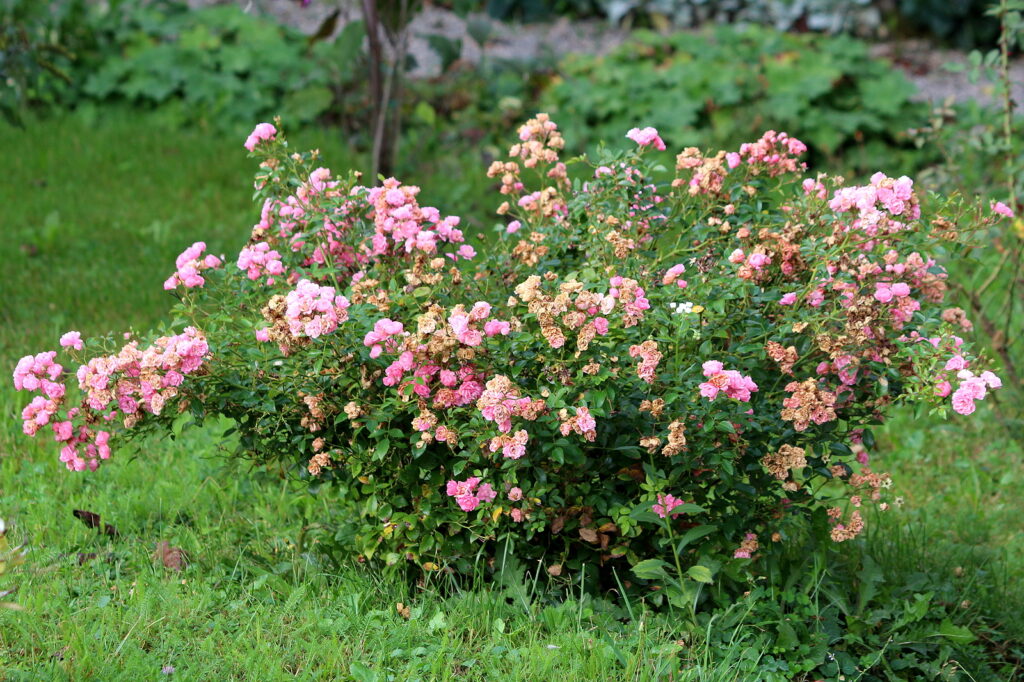
Most Popular Rose Varieties by Type
Here are some popular varieties of the main types of roses, along with brief descriptions:
Hybrid Tea Roses
- ‘Peace’: Known for its large, fragrant, pale yellow blooms with pink edges. It’s a classic rose variety symbolizing peace and harmony.
- ‘Mister Lincoln’: A deep red rose with a strong fragrance. Its long stems make it ideal for cutting.
- ‘Double Delight’: Features creamy white petals with red edges and a sweet fragrance. Its blooms are eye-catching and change color with sunlight.
Floribunda Roses
- ‘Iceberg’: One of the most popular floribundas, known for its white flowers that bloom abundantly throughout the season.
- ‘Bonica’: A hardy rose with soft pink flowers. It’s disease-resistant and blooms repeatedly, making it great for borders.
- ‘Julia Child’: Displays buttery yellow blooms with a licorice fragrance. This variety is compact and ideal for garden beds.
Climbing Roses
- ‘New Dawn’: A pale pink, fragrant climbing rose that blooms repeatedly. It’s vigorous and often used to cover walls and fences.
- ‘Eden Climber’: Also known as ‘Pierre de Ronsard,’ this rose has large, creamy pink flowers and is prized for its romantic appearance.
- ‘Cecile Brunner’: A small-flowered rose with light pink blooms, often called the “Sweetheart Rose.” It’s perfect for covering trellises and arches.
Shrub Roses
- ‘David Austin Roses’ (e.g., ‘Gertrude Jekyll’): A popular English rose with a strong old-rose fragrance and pink blooms. It’s hardy and repeat-blooming.
- ‘Rosa rugosa’: Known for its large, fragrant, pink or white flowers and edible rose hips. It’s very hardy and resistant to diseases.
- ‘Knock Out’ Roses: These are extremely disease-resistant and bloom continuously throughout the growing season. Available in red, pink, and yellow.
Miniature Roses
- ‘Be My Baby’: A compact rose with bright red flowers, suitable for containers or small garden spaces.
- ‘Baby Paradise’: Features lavender-pink blooms and has a mild fragrance. It’s perfect for patio pots or as a low border plant.
- ‘Sunblaze’ Series: This series includes various colors like yellow, pink, and red. The roses are petite and ideal for small gardens or indoor containers.
These varieties represent some of the best-known and widely grown roses in each category, valued for their unique characteristics, hardiness, and beauty in the garden.
Also of interest:

